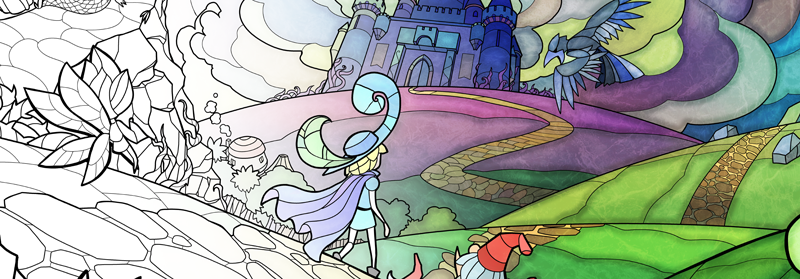A Journey from Traditional Art to Video Games
One of the most common questions about Little Briar Rose asked from players, journos and even my family is: how did you achieve such a stained glass style?
It was hard to summarize days of work in a few words, so I finally decided to write a post about my journey through the creation of this peculiar style.
In this first part, I’ll talk about the most important phase of building up a consistent artistic work: the research of references and inspirations!
Let’s dive into the flow, then!
First of all, a small introduction about this art technique.
The stained glass term can refer to both colored glass as a material or as a technique. As a material, it applies to glass pieces that have been colored with a mix of minerals added during the manufacture process or by painting on it. When talking about stained glass windows, you are generally referring to a composition of small pieces of glass held together (traditionally) by strips of lead or wood.
This form of art was used since the Roman Empire era to decorate houses and thermal baths. However, the oldest stained glass windows still intact comes from medieval age churches, which are also the most commonly known.
Stained Glass Main Features
In order to create a valid stained glass effect in computer art, I had to catch the essence of this art and achieve the same astonishing feelings.
I have to admit that I spent quite a lot of time during high school adorning my notebook with stylized fantasy paintings. When we decided to create Little Briar Rose, it was as if someone asked me to get back to play, just with different tools.
I indeed enjoyed it!
After exploring plenty of piece of art throughout history, I identified the main aspects of this style: Bright colors, thick black lines, and stylized segmented shapes.
My major concern, though, was the outcome, that could cause a lot of eye strain due to his a strong visual impact. Quite tricky to balance.
Keeping it in mind, I began my research.
Gothic Windows Style
It’s quite obvious to say that my first reference were the sparkly windows inside gothic and medieval churches. It wasn’t hard to find a great variety of artworks to look at. This style spaced between stylized shapes to realistic illustrations and I had room for self-interpretation.
Although amazing, this style wasn’t exactly what I wanted.
The main problems were the sacral theme and the gothic mood, that gives a dark and awe-inspiring setting. The overall result would have been a bit oppressive, unfitting the Sleeping Beauty fairy tale version we had chosen. I then moved on, following the stained glass art historical evolution.
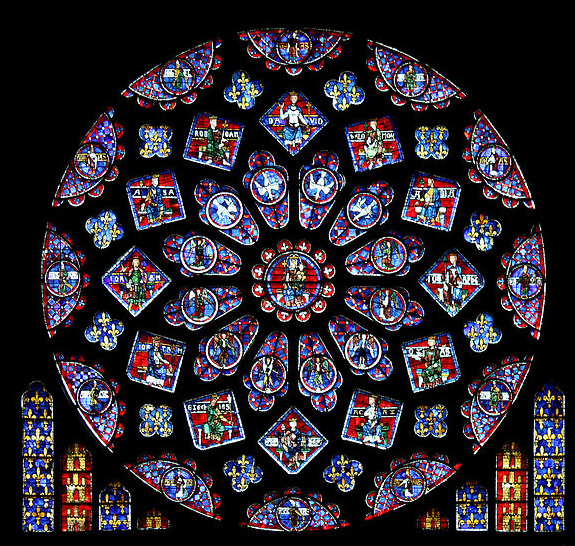
Modern Stained Glass and Art Nouveau
Eventually, I found a style closer to what I had in mind in the Art Nouveau. It uses curved neat lines, natural decorations, and some oriental art. It can create beautifully entangled paintings that were just perfect for Briar Rose.
When I was a teen, I had the chance to see with my eyes stained glass windows from this style in the “Casina delle Civette” Museum at Rome. It played a role in my final decision.
Satisfied by the references I found, I finally started studying how to simulate stained glass windows on a monitor.

Video Games on Glass
Little Briar Rose isn’t the first media that features colored glass art. I wanted to explore how other artists achieved the same goal I was aiming for.
Disney’s Classics or The Legend of Zelda are just a few of them.
Stained glass windows are often used in intro sequences, that usually introduce an ancient story, creating a more plausible world setting. This helps with getting people involved in that world and feel it more real. Here’s an overview of the one I focused on.
The Beauty and the Beast
I’d lie if I say that “The Beauty and the Beast” movie wasn’t in my mind since the beginning.
I started by watching the movie’s intro and I studied the way they tried to achieve the glass texture, especially the color irregularity.
I love the way they mixed the Disney toon style with a gothic stained glass look. However, it was still far from my idea: too gothic, too spiky.
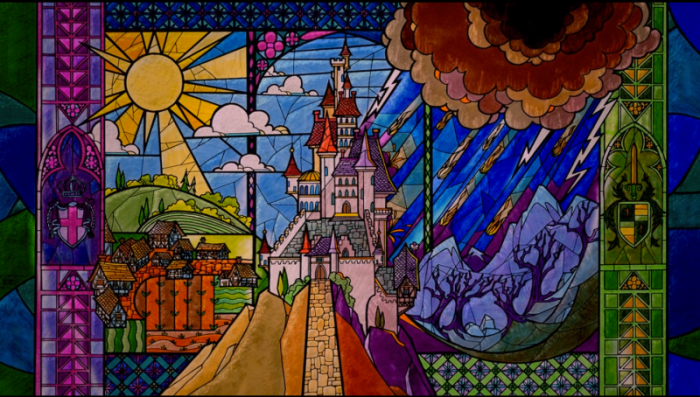
The Legend of Zelda
“The Legend of Zelda: Wind Waker” has some beautiful examples of stained glass windows featuring a neat and colorful toon style. The glass decoration gives a charming and mysterious mood to the painting, creating a strong sense of adventure.
That feeling caught me instantly and I decided it was something to achieve. It also taught me how to use a bit of shadow to boost the realism with an irregular light source.
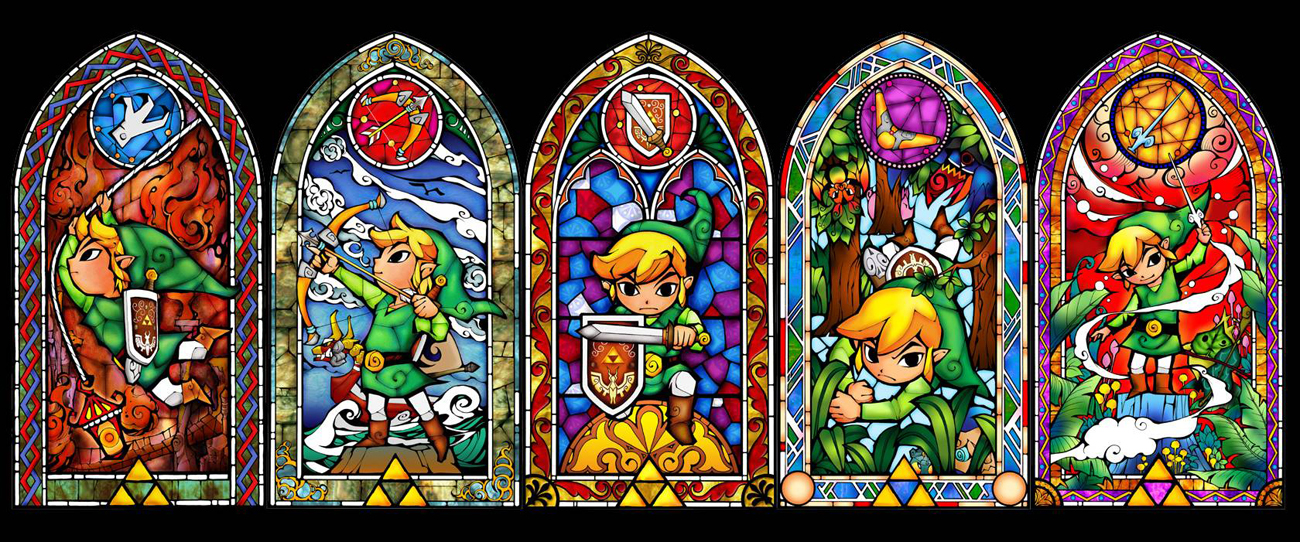
Kingdom Hearts
Exploring various references, I eventually found some images from the beginning of Kingdom Hearts. After the game intro, the player walks on a beautiful marble floor that looks very similar to a stained glass style picture. I studied very carefully the Sleeping Beauty version here below.
This was an important find for me. Aside from the lead lines or the colors, I was having issues on enhancing the brush textures. All of my attempts let to a fake and unappealing result.
Weird enough, the Sleeping Beauty picture was a picture over a marble texture. It was effective. I decided to try it myself and, after some attempts with various marble textures, I got a satisfying result.
Eventually, I found the one I’m still using today. It’s weird to say, but the Little Briar Rose “brush effect” derives from marble.

The Final Aim
Here is when I stopped my research to start working on the actual game graphics. I knew what I was aiming for: A fully stained glass toon-like video game with curled elements and intriguing shapes. An eccentric mood for the player to enjoy.
All of this research took me a full week and I finally had the first concept.
Since we were challenging in a contest, there were only three weeks left for developing the whole game. How did I manage to get all the graphics ready in time?
It was time to find a method, easy and quick to work with.
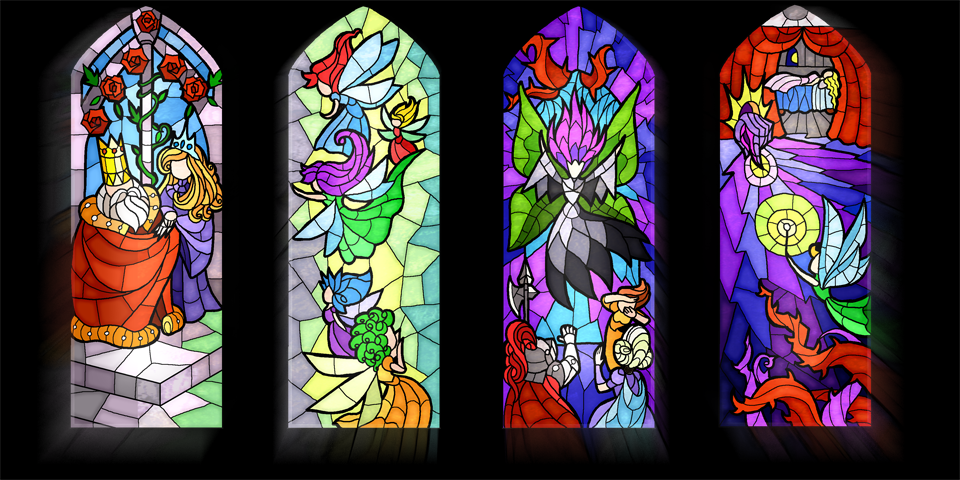
In the next part, I’ll show how to create the game graphics in detail.
In the meanwhile here are a couple of interviews we released for Zam and Siliconera where we talk about the game making-of and some other curiosities.
Stay tuned!
Did you enjoyed it? Please subscribe to our newsletter for more content and updates about our games!


